Lighting FAQs and guide
Everything you need to know about the basics, right here!
Welcome to the world of lighting! This is a small reference guide to all the basics in theatrical lanterns, effects and lingo so you can better understand the industry and not be lost in the world of buzz words and technical terms. See our table of contents to guide you to your enquiry. We also have some advanced information in some of the sections for the more adept lighting technician wanting to refine their knowledge on lighting, protocols and other concepts.
Types of Lanterns in Theatre & Events
Profile Fixture/ Profile Spot.
Profile lanterns feature one or more Plano-convex lenses and may produce clearly defined 'sharp' spots of light, or may be softened to have fuzzy edges.
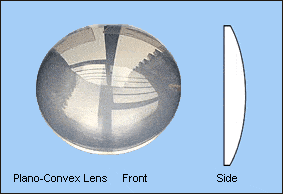
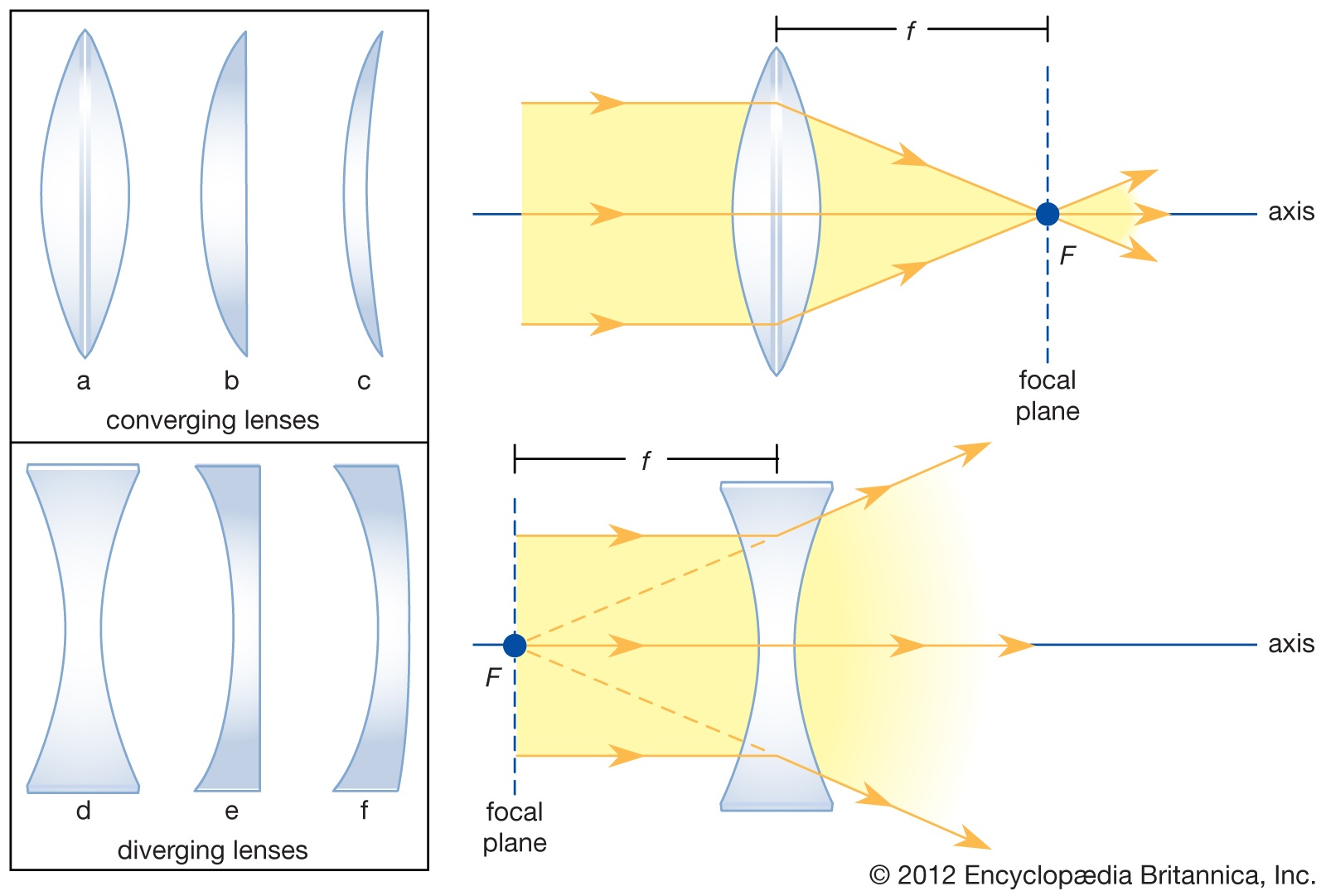
Profiles may manipulate the round beam of light with metal framing shutters that sit inside the housing, allowing square or other shapes to be projected from the light source which can be useful for framing on and around set or other staging elements. A profile is designed to 'profile' or highlight a particular person, object or set piece. A profile lantern is also able to project images with a 'GOBO' - (see gobo) inserted in the middle of the fixture. The high output and flexibility of profile lanterns make them highly desirable in lighting rigs and they may be used in most lighting positions for a variety of different purposes.
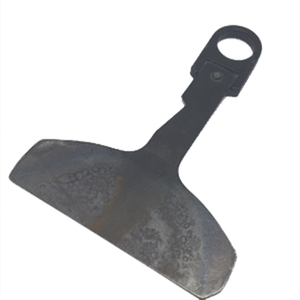
Framing shutters to manipulate the beam of the light.

A Gobo holder with a glass gobo inside it.
Profiles come in two variations: fixed and zoom.
Fixed profiles have one or more non-adjustable lenses and therefore have a set size at a given distance. The beam can be shaped using the inbuilt shutters or a drop in iris. Fixed beam profiles are more efficient in the lens train and are slightly brighter than zoom profiles (see below) set to an equivalent size. In a fixed beam profile the lens can still be adjusted to soften or sharpen the beam as desired, or diffusion media may also be used. The most popular example of Fixed Beam profile is the ETC Source 4. Lens options available are 5, 10, 14, 19, 26, 36, 50, 75, 90 degrees.
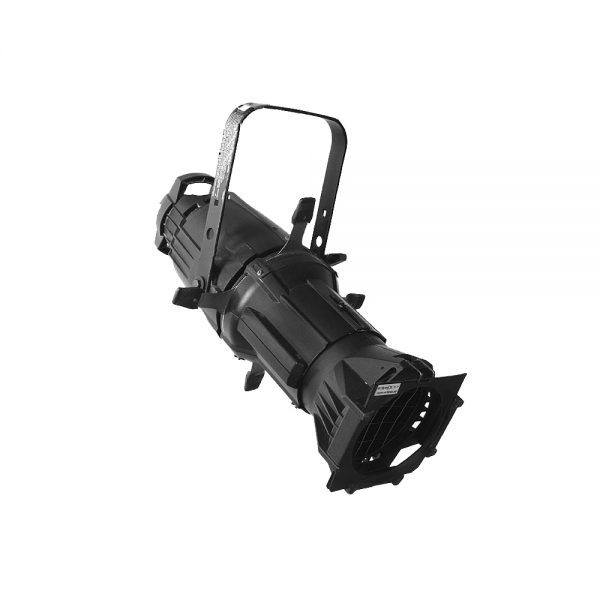

Zoom profiles as the name suggests allow the user to move the lenses and adjust the beam size between narrow and wide. The sharpness of the beam is fully adjustable throughout the beam angle range of the lantern. Zoom profiles are popular in lighting positions where the focus may change on a day to day basis and the designer may wish to change the beam size without having to swap the entire lantern or lens barrel.
Zoom profiles come in a wide range of lens options, but the two most common are 15 - 30 and 25 - 50 degrees.
The degrees for both fixed and zoom profile correlate to the angle of the beam exiting the fixture. Obviously the bigger the degree, the larger the light coverage. However, the larger the degree, the lower the amount of light for a given area. The beam size can be reduced even further by the use of an Iris which features an adjustable aperture which can cut the beam down to almost nothing, at the expense of reduced lighting output.
Fresnel
This type of lantern is a reflector and bulb in a housing with a Fresnel lens fitted at one end that produces a very soft, even wash of light. The bulb in the housing may be adjusted closer or further way in relation to the lens to change the size of the beam. The beam may be roughly shaped by the use of barn-doors. Fresnels are ideal for a stage colour wash from positions above the stage or as backlight and are also utilised heavily in film and TV applications due to the even nature of the beam.
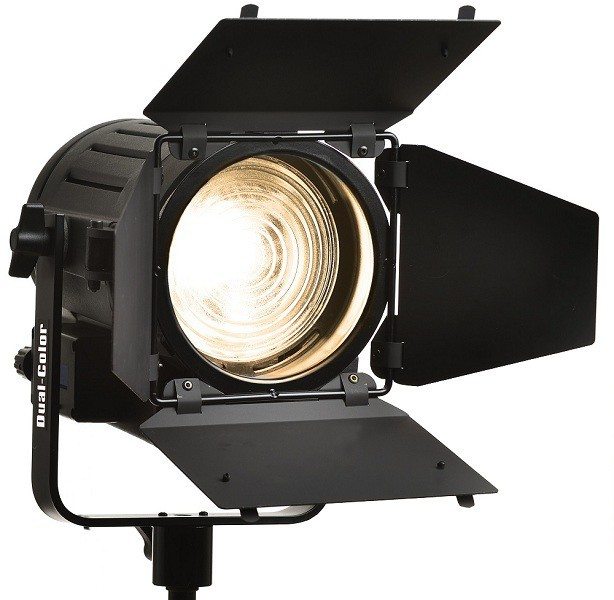
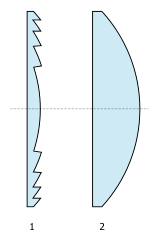
The Fresnel lens (1) on the left, vs a profile (2) on the right
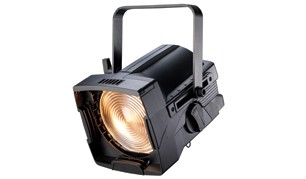
P.C or Pebble Convex
A P.C fixture is very similar to a Fresnel consisting of a wash light that has a soft beam, however its lens is different. It utilises a smooth lens that is ‘pebbled’ at the rear, creating a wash with slightly sharper edges compared to a Fresnel. This fixture usually has a singular zoom control and can zoom from 6-60 degrees. Barn-doors are also a common accessory to shape the light source. These theatrical units are very popular in Europe.
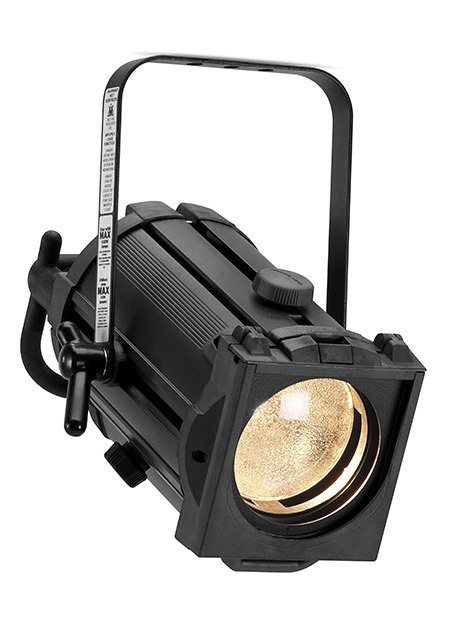
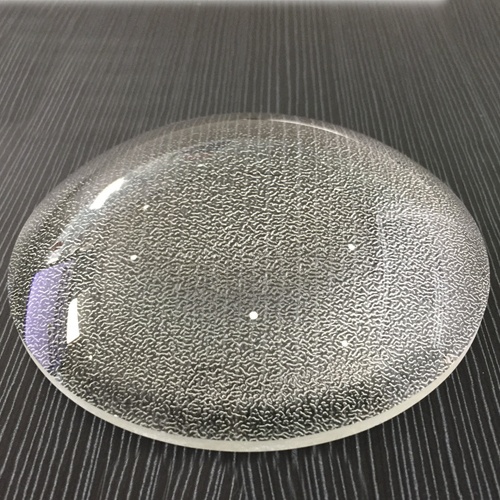
A P.C lens is pebbled and has etchings to smooth the beam
PARCAN
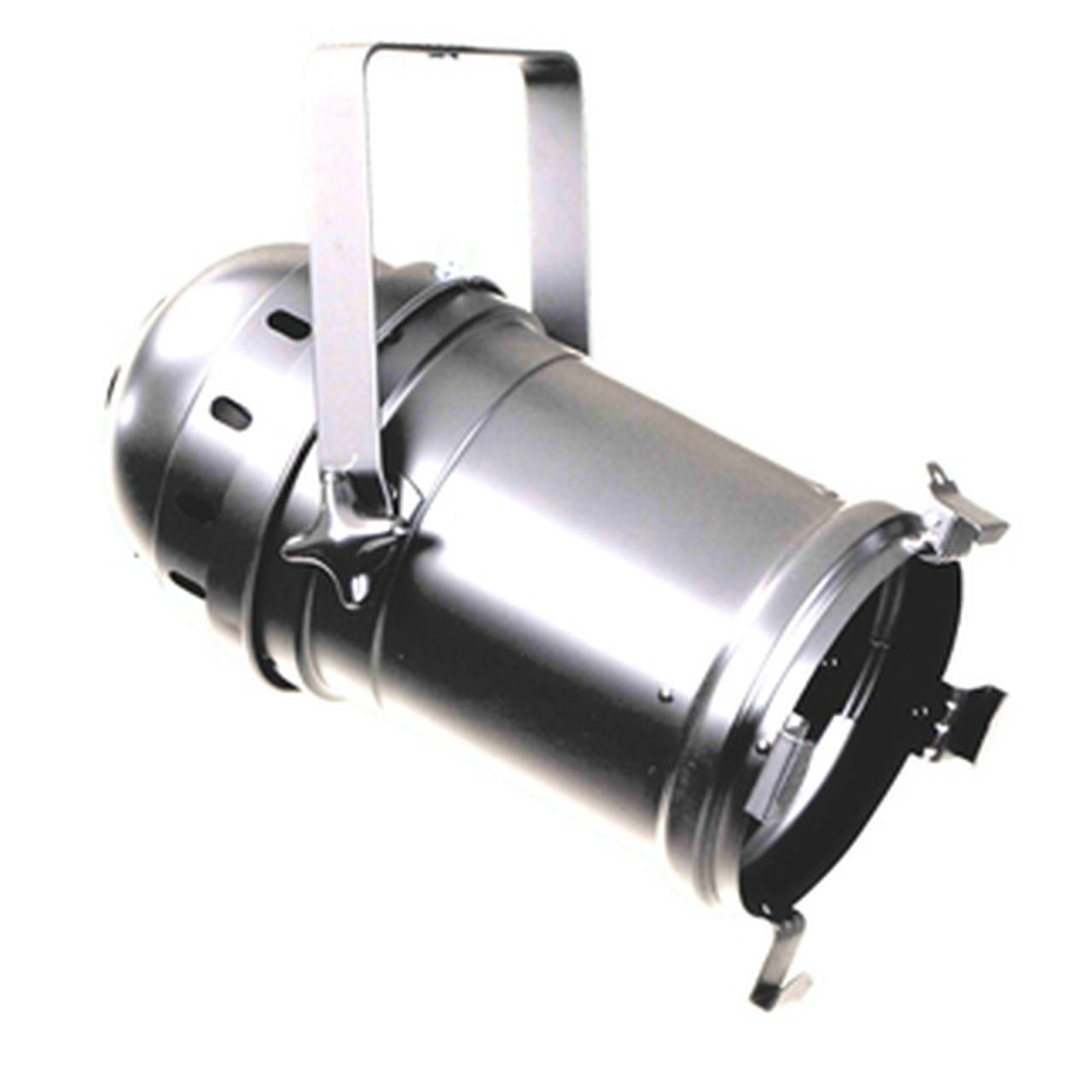
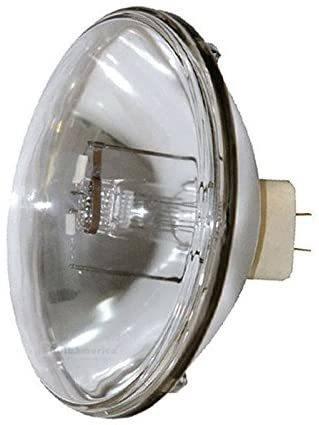
A PARCAN or PAR is short for ‘Parabolic Aluminized Reflector’
It is a sealed unit consisting of bulb, reflector and lens all as one unit which is then placed inside a metal tube ‘can’. The nature of its construction means that the beam angle on a parcan is not immediately adjustable. To do so requires changing the entire bulb and lens unit. A variety of lens and bulb combinations are available:
VNSP – Very Narrow Spot 12⁰
NSP – Narrow Spot 12⁰ - 15⁰ oval beam
MFL – Medium Flood 23⁰ – 50⁰ oval beam
WFL – Wide Flood 42⁰ – 60⁰ oval beam
All PAR cans produce a soft, oval beam which is suited to washing large areas or aerial beam effects. The bulb may be rotated by hand in the rear of the unit to adjust the direction of the oval beam. The one exception is the VNSP bulb which produces a round beam. Barndoors may be used on the front of the fixture to control spill. Parcans come in a range of sizes starting at a PAR16 all the way up to PAR64. Dividing the given number by 8 will give you the diameter of the bulb in inches. Ie: PAR64 64/8 = 8” bulb. Wattages range from 50W for a PAR16 up to 1000W for a PAR64.

PAR Cans were heavily utilized in large rock shows in the 1970s and 1980s.
Blinders
These fixtures are known as audience blinders. They traditionally had a paired circuit of par 36 lamps to blast out high output of incandescent light. These fixtures are perfect for the big finish or to grab attention. There are many variations available, usually paired. Variations include 2, 4, 6 or 8 cells of lights to blind the audience. Some more modern blinders are able to have adjustable lens housings, allowing the designer the ability to slightly aim each individual bulb in different directions. Modern Blinders and LED blinders are also able to have pixel control, allowing the operator the ability to control a single bulb, rather than pair. Some modern LED blinders are also able to change colour and create strobe effects. This newer fixtures also come in an array of shapes, cells and sizes.

Moving Head Spot
Moving head spots are part of the automated range of lighting fixtures where many of the attributes of the fixture may be adjusted remotely from the control console.


A moving head spot in its most basic form is essentially a profile fixture that has been mounted in a motorized yoke. Stepper motors enable the pan and tilt of the fixture and therefore the direction of the beam of light to be adjusted remotely by the designer. Modern moving head spots are very advanced and can control most attributes of the light output, in addition to pan and tilt. The operator is able to adjust the fixture's intensity, colour, size, and sharpness of the beam. In addition the operator may be able to insert gobos or animation discs, and in some cases even motorized shutters as well. All of this can be controlled from the comfort of the console.
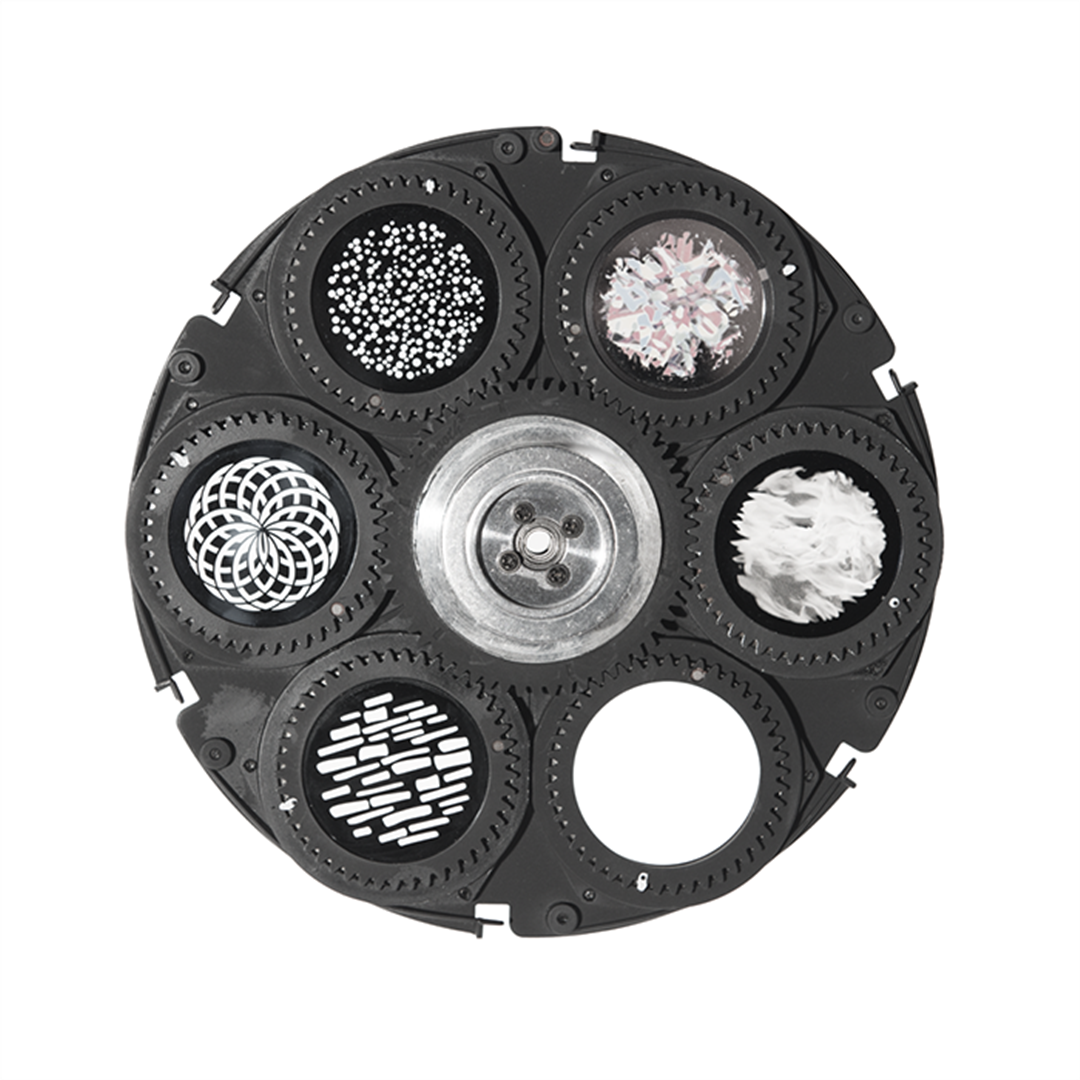

Gobo wheels found in moving head spot fixtures. The gobos can be fixed (see right) or interchangeable (see left) and may be rotated in position.
Moving head spots most often have a discharge lamp as the light source, although LED is becoming increasingly more common.
The moving head spot has become a mainstay of any modern lighting rig, due to the almost complete flexibility of the fixture and the range of looks it enables. Large scale productions and concerts may feature several hundred such fixtures in the rig.
Moving Mirror / Scanners
Moving head mirrors or 'scanners' are another variation of the popular moving head spot. They tend to have a longer body and a motorised mirror, which reflects the beam at the head of the light. This means the fixture can be placed into tighter spots and unconventional places to still create a moving image, spot or wash. This does come at a cost, as the scanner's optic range is limited by the mirror on the head. It can only reach certain angles and the fixture itself is limited to how it is hung in the rig, A common strategy is to hang them on a steep angle and in reverse, as that allows range of motion to reach directly underneath the fixture, as well as down stage.
This fixture usually has all of the standard moving light functions, including: colour changing wheels, prisms and beam fx, ability to move light around the space, and usually a motorised zoom. These fixtures are not as popular as moving head fixtures due to range of motion, but are still found in night clubs, bars and some live entertainment venues.

Moving Head Wash
Similar to a moving head spot, a moving head wash is a wash fixture that may adjust pan and tilt, colour and zoom from the control console. Some wash fixtures have adjustable beam shaping such as internal shutters or oval beam shapers but lack the gobo wheels and animation discs of moving head spots.
Moving head washes traditionally had a discharge lamp as the light source, though tungsten sources are still available. Most newer designs now feature LED sources. More recient LED designs usually allow for pixel control of individual cells in the fixture to allow for greater wash mixing and visual effects.
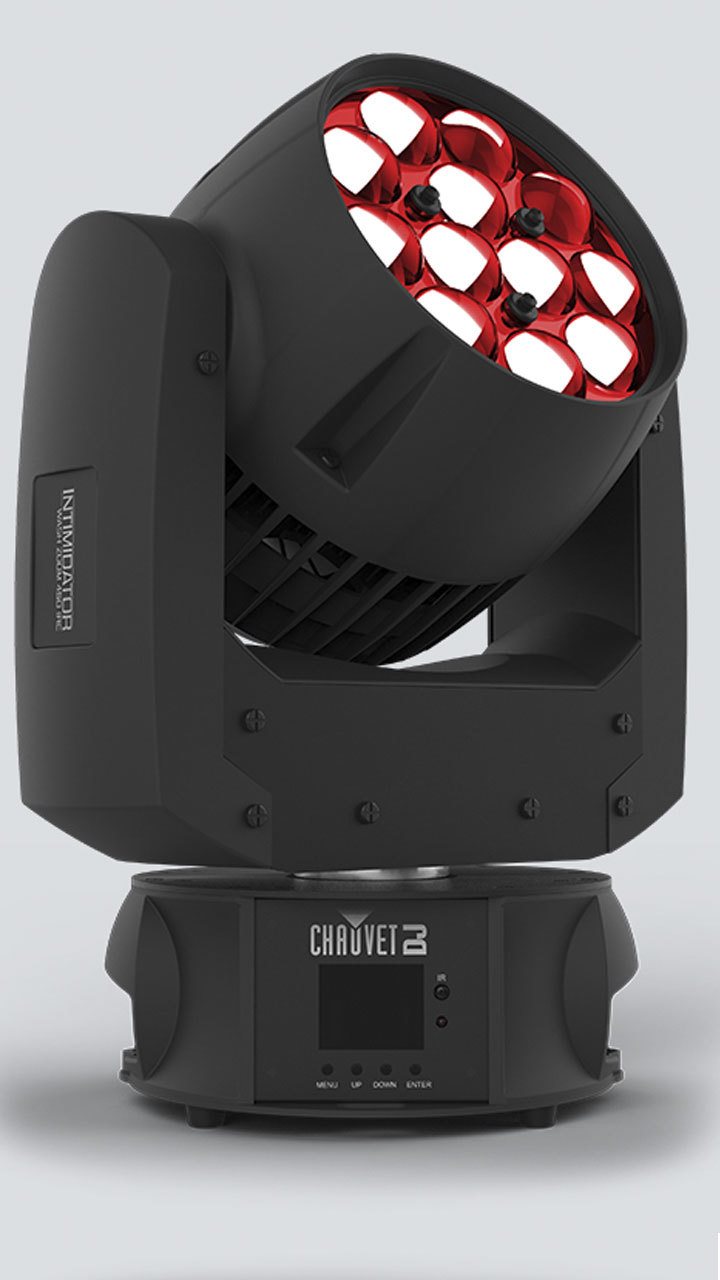
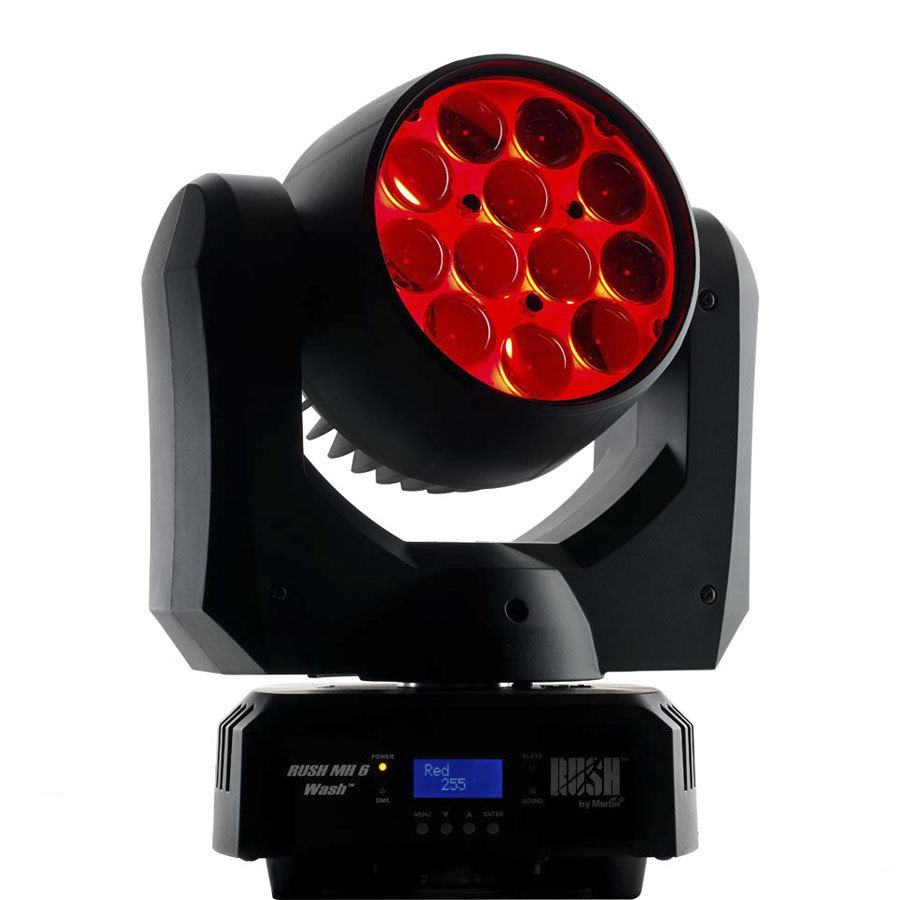
Hybrid Fixtures
Hybrid fixtures are units that are able to perform two or more functions that normally require seperate types of ixtures. Typically they are moving head fixtures with the ability to be a moving head spot, a wash and sometimes a beam FX light. This is done via clever mechanisms or a lens that drops into the housing to change the zoom range. These fixtures are highly sought after in the live music and performance world. However, as they are a hybrid and not a dedicated fixture, they sacrifice some of the more premium features in order to gain multiple functions. Some limiting functions are: colour wheels instead of full CMY mixing; hot spotting on wash mode as the bulb is primarily set for spot or beam mode; no framing shutters to profile the spot; loss of output in wash mode or zoom ranges snapping from spot mode to beam mode etc.

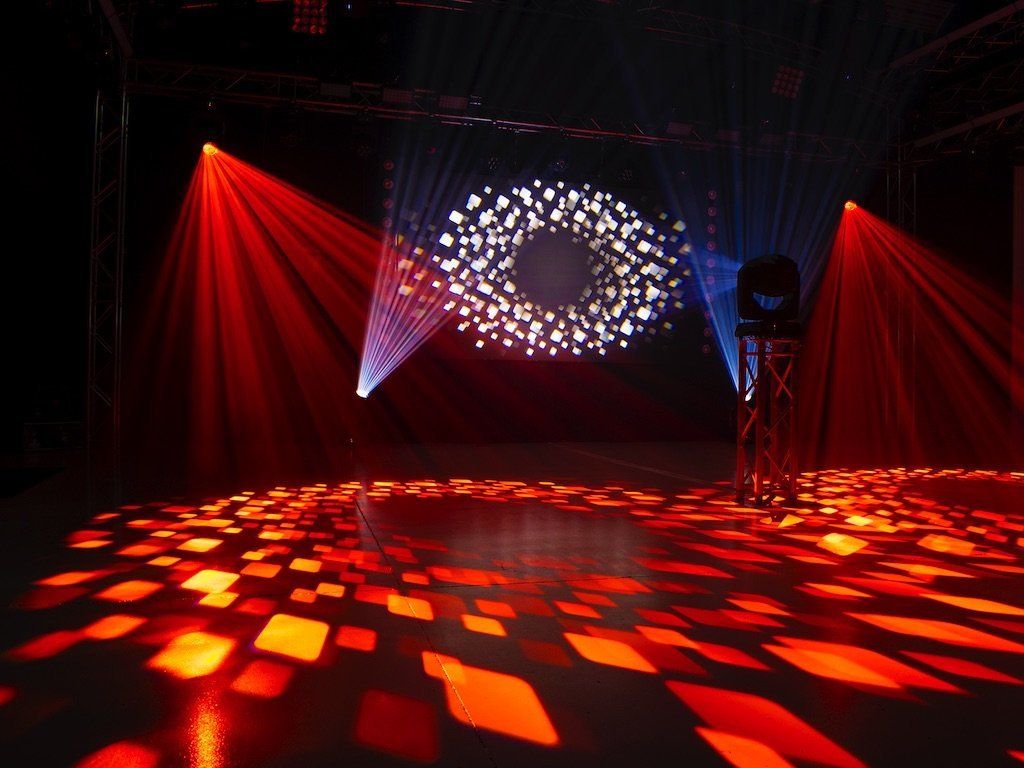
Gobo
Gobos are a pattern or image that can be inserted into the gate of a profile fixture. Gobos can be made of glass, metal or for use in low temperature fixtures out of Acetone. Gobos are used to project a defined shape or pattern similar to the way a stencil is used in graphic design. All gobos need to be housed in a gobo holder, and only are able to be utilised in profiles, moving head spots or hybrid fixtures. Image quality can be a single layer, to a very complex multi-layered design with multiple colours. Typically Gobos are used as a beam break up, but can be used to project a static image on a surface. When used with animation wheels, a gobo can project a moving image.


Animation Wheel
An animation wheel is a very unique effect. It utilises a large, circular stencil or gobo, and rotates through the light source. This image can create fire and water effects, heat ripples or another unique dynamics to sit on top of another gobo. An animation wheel can be mounted at the front of a profile unit, or in modern moving head spots are contained inside the light. The image can be focused or blurred to create a range of dynamic effects, giving the illusion of moving imagery or water in front of the lens.
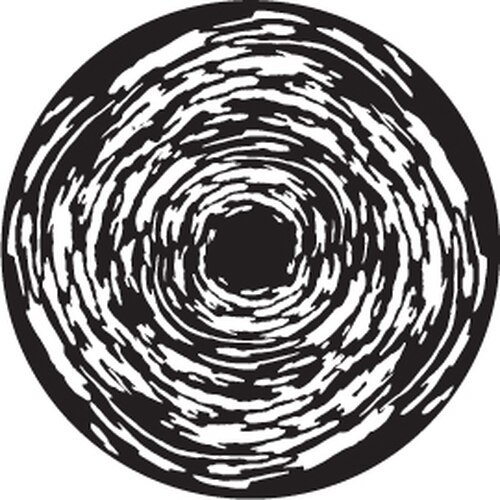
Advanced Lighting
What is Pixel Mapping?
Pixel mapping is the ability to map out a set of lights and run a series of effects through them, or primarily video. Pixel mappable units come in an array of shapes and sizes. Pixel resolution is determined by the amount of cells in the fixture, or the fixture itself can count as one pixel. For example, a Chauvet Colorband Tricolour unit has 12 cells per metre in a strip. If we stacked the units side by side, we would end up with a screen resolution of 12x 10, or 120 cells, which can produce some low resolution video or some great visual FX.
Pixel Mapping does not mean the lights have to be condensed together, however, the closer they are to each other, the more coherent the image will be.
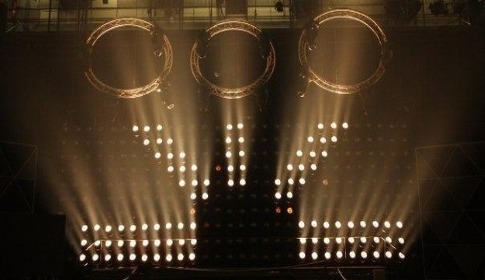

What Is DMX controlled lighting?
DMX controlled lighting is when you are able to control one or more lighting fixture abilities such as dimming / brightness, movement, colour changing or effects via a control device. The control device is usually a lighting console, but can sometimes be a remote. You need to have a form of control (like a lighting desk) to record the lighting looks and scenes of the lights you are using. The information travels out of the desk, to the light, using a DMX cable. The message is then passed on from light to light via a set of DMX cables that are connected from one light to another.
The most basic way of thinking about this is this: The lighting console is the 'brain', the lights are the 'legs' and 'arms' of the body and the DMX is the 'nervous system' that relays the information from the brain to said parts.
There are many types of control protocols, which we will go on in detail below.
DMX512
DMX (known as digital multiplex or DMX512) is a standard for digital communication networks that are commonly used to control stage lighting and effects. It is transmitted via specialised data cable and is specifically fitted with a 5-pin XLR connector to differentiate DMX from other protocols or audio leads. Some fixtures are fitted with 3-pin XLR connectors which may also be used, however it is important to note that audio/mic cables are not suitable for the transmission of DMX data. All data cables whether fitted with 5 or 3 pin connectors must be correct DMX data cable. The pinned end (referred to as the 'male' end), goes towards the desk, and the socketed end (referred to as the 'female' end) goes towards the last fixture of the chain. Another way to make sure DMX is being ran correctly, is to remember the DMX comes OUT of the desk and goes IN to the first light. If you want the signal to continue going, you make the signal come OUT of the first light, then IN to the 2nd light, and so on. The DMX standard allows for 32 devices per chain, with a recommended maximum length of 400M/1000FT of cable per chain. Additional DMX chains can be created via the use of a DMX splitter. A 120 ohm DMX terminator should be placed at the end of each DMX chain to prevent signal reflections which may cause data errors.
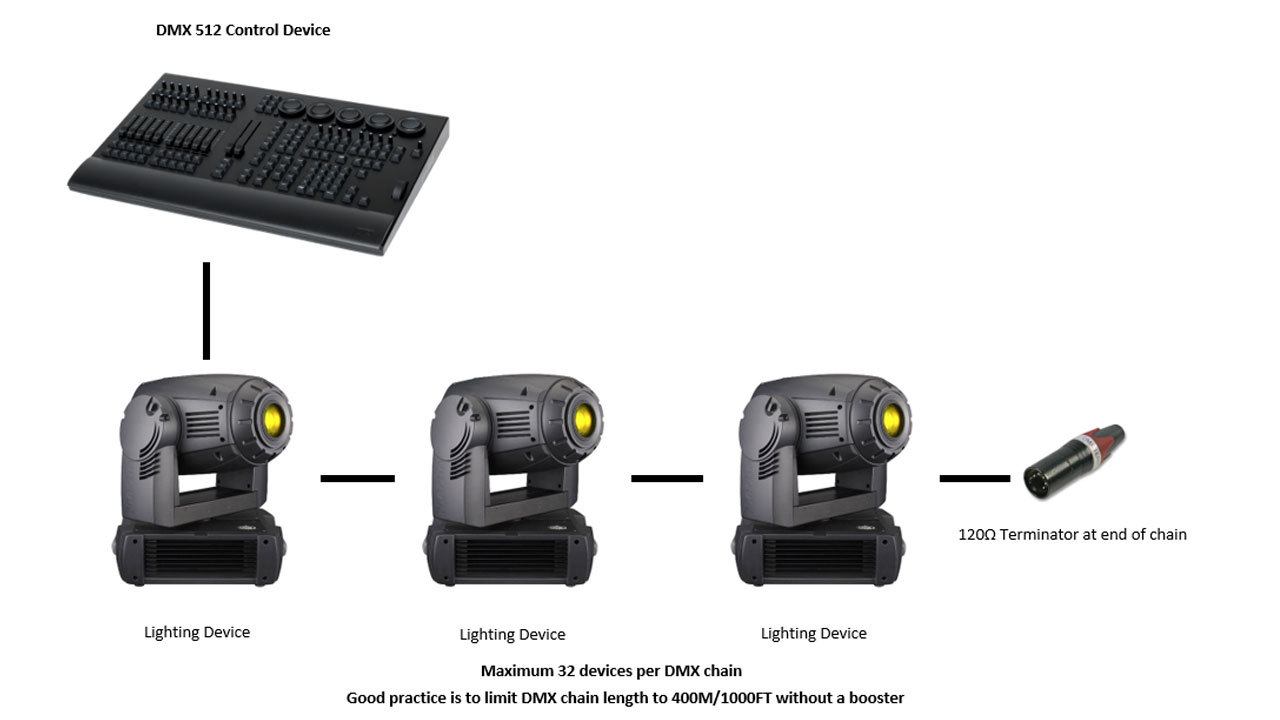
DMX was originally intended as a standardized method for controlling lighting dimmers, which, prior to DMX512, had employed various incompatible proprietary protocols or 0-10V analogue control. It soon became the primary method for linking controllers (such as a lighting console) to dimmers and special effects devices such as fog machines and intelligent lights. DMX has also expanded to uses in non-theatrical interior and architectural lighting, at scales ranging from strings of Christmas lights to electronic billboards and stadium or arena concerts. DMX can now be used to control almost anything, reflecting its popularity in theatres and venues.
DMX512 employs EIA-485 differential signalling at its physical layer, in conjunction with a variable-size, packet-based communication protocol. It is unidirectional.
Please note that the DMX protocol has no built in error checking and should therefore not be used to directly control special effects such as pyrotechnics or automation.
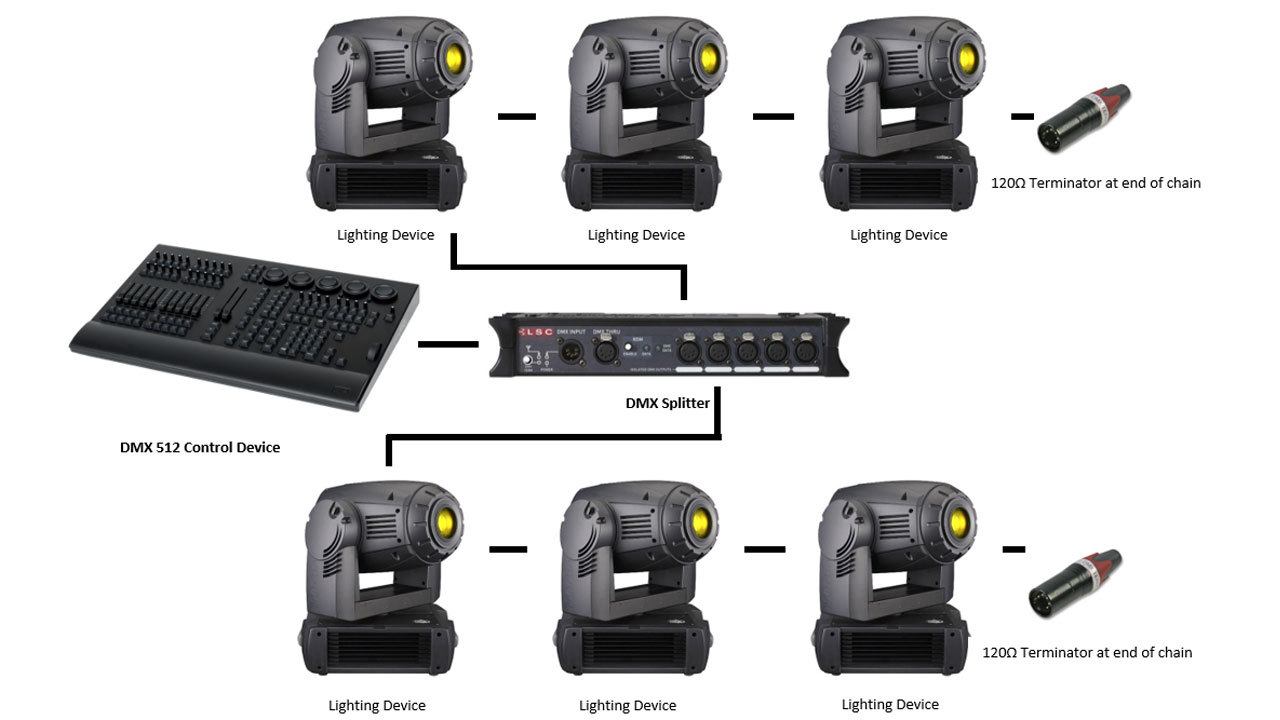
Art-Net
Art-Net is similar to DMX, however instead of using DMX cable, it relies on network cable such as Cat 5 or Cat 6 (similar to your hard-line internet cable at home)
Art-Net is a royalty-free communications protocol for transmitting the DMX512-A lighting control protocol and Remote Device management (RDM) protocol over the User Datagram Protocol (UDP) of the Internet protocol suite. It is used to communicate between "nodes" (e.g., intelligent lighting instruments or data nodes) and a "server" (a lighting desk or general purpose computer running lighting control software).
Art-Net is a simple implementation of DMX512-A protocol over UDP, in which lighting control information is conveyed in IP packets, typically on a private local area network such as Ethernet. Supported functions include transmitting and receiving lighting data (e.g., fader levels for individual lights, positions of movable lights); management functions such as detecting nodes, updating node control parameters, and transmitting timecodes; and functions that allow nodes to "subscribe" to "publisher" nodes so that, for example, nodes A and B can subscribe to node C (C will unicast information to A and B).
Art-Net was developed because of the following:
DMX was designed to control up to 512 channels (a universe) of lighting values over a single cable. It worked well for many years but eventually outgrew its 512 channel limit, and lighting desks supporting several DMX universes began to appear. Soon, even this was not enough as the development of channel hungry fixtures progressed and designers needed more channels than DMX could offer.
Art-Net was created by Artistic Licence to overcome the channel restriction of DMX while still utilizing its structure. It allows multiple DMX universes to be transported over a single Cat5 cable using Ethernet technology.
In the early days DMX signals from a lighting desk were converted to Art-Net using a separate interface product. The signals were then transported over an Ethernet network and converted back to DMX before entering each fixture. However, manufacturers quickly saw the benefits of Art-Net and started to support the protocol in their new lighting controllers. As a result, native support for Art-Net in consoles, dimmers and moving lights is now quite common, so increasingly the DMX512 universe is a virtual concept.
sACN
Streaming Architecture for Control Networks, or sACN, is a standard protocol developed by ESTA to efficiently transport DMX universes over the network. It is comparable to Art-Net in many aspects. sACN is a popular protocol to control a large number of RGB LEDs.
sACN is a suite of network protocols for control of entertainment technology equipment, particularly as used in live performance or large-scale installations, (for example, lighting, audio or special effects equipment). ACN is maintained by Entertainment Services and Technology Association and its first official release was ANSI Standard E1.17-2006 - Entertainment Technology - Architecture for Control Networks. The standard was subsequently revised and released as ANSI E1.17-2010.
ACN was initially designed to be layered on top of UDP/IP and therefore will run over most IP transports including standard, inexpensive Ethernet and 802.11 (Wi-Fi) networks.
What is Timecode and how does it work?
Timecode is method of sending a time signal generated from audio, video or lighting software to allow perfect synchronisation with all playback systems. This is primarily used in large scale theatrical or musical productions where cues have to hit at the same time or a dance show where music and lighting has to be in-sync.
An example: when you trigger an audio playback on a audio device like QLab, you can make QLab also send a timecode signal over a network or MIDI connection to the lighting console that will begin triggering lighting cues. It eliminates human error or delay in cross-calling cues and enables complex cue sequences to be triggered automatically.
Historically, Timecode was originally used in the film and TV industry to enable audio and video to remain synchronised. The standard was formalised in 1967 and was made available for the industry to use, under the guidance of the Society of Motion Picture and Television Engineers (SMPTE).
The timecode consists of standard 24 hour time clock Hours (0-23), Minutes (0-59) and Seconds (0-59) as well as Frames (similar to frame rates in film as it is a film based protocol) This provides a high level of accuracy to keep video, lighting, sound, automation and any other systems in perfect synchronisation.
MIDI triggers?
A MIDI controller is any hardware or software that generates and transmits Musical Instrument Digital Interface (MIDI) data to MIDI-enabled devices, typically to trigger sounds, lights and control parameters of a performance. This can be used to send timecode rather than using network cable. MIDI triggers or MIDI controllers typically have some type of interface which the performer or operator presses, strikes, or touches. This action generates MIDI data (e.g. notes played and their intensity), which can then be transmitted to a MIDI-compatible module or controller.
The MIDI controller can be populated with any number of sliders, knobs, buttons, pedals and other sensors. While the most common use of MIDI controllers is to trigger musical sounds and play musical instruments, MIDI controllers are also used to control other MIDI-compatible devices, such as stage lights, digital audio mixers and complex guitar effects units.
Atmospherics
Hazer
A haze unit is a machine that generates a fine mist in a performance space to make light beams visible or to create a coloured atmosphere. A hazer is the one on the single most important atmospheric tools in events and entertainment industry. Unlike a fog machine, haze is generally designed to be subtle and reasonably even as opposed to plumes of smoke across stage. Haze typically has a longer hang time than theatrical fog. While conventional fog will hang in the air for several minutes, a haze effect filling the same volume of space can last upwards of an hour to several hours or more, depending on the size of the venue and the amount of ventilation.
The fluid used in haze machines to generate the effects are either oil or water-based. Most oil-based haze fluids use a mineral oil base, while water-based fluids use either a propylene glycol or glycerol base. Although both formulations of fluid are referred to as haze fluid, they are very different and should never be mixed into units of opposite requirement. This will damage and break the unit. Propylene glycol/water haze fluid is sometimes referred to as "water based haze".

Fog Machine/ Smoke
Fog machines or foggers are units that blast or release a plume of liquid particle in the air, creating a fog, sometimes referred to as smoke. The term “smoke machine” is actually incorrect, as the machine is utilising a fluid to create the mist, smoke or fog, and not solid particles like traditional smoke. These units can be triggered via DMX, remote or timer and come in a variety of shapes and sizes. The unit creates the fog by heating the fluid, compressing it, then releasing it into the air at considerable velocity.
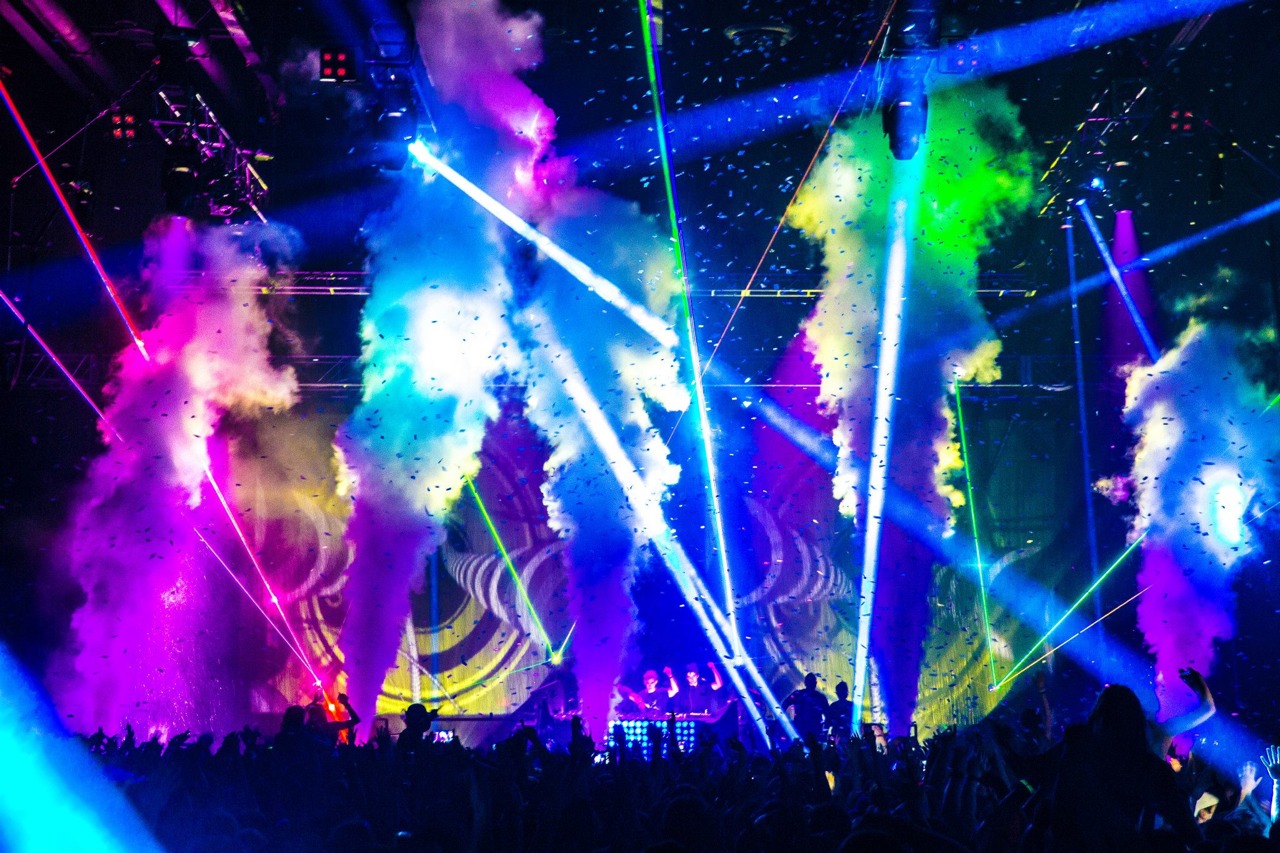
Fazer? I’ve never heard of a fazer?
A fazer is a water based hybrid unit that is primarily a fog unit, but is able to pass as a hazer as well. It utilises all the same principle of a traditional fogger, but has another fan or set of fans to greater dissipate the fog to create a finer mist, similar to haze. These units are great for being able to have the dual ability of smoke and haze, however if you do not require both functions, it is recommended to utilise a specialised unit.
Lasers
Lasers have been around since the late 60s, first utilised and performed in the 1968 Adelaide Festival of the Arts. Lasers utilise a condensed beam of light through the process of optical amplification. Laser itself stands for: "light amplification by stimulated emission of radiation". Modern theatre and event lasers work with a program to allow them to change colour and shape, with some being able to create HD lifelike images.

Pyro
Pyrotechnics uses fire, powder and sometime explosives to create light shows. Fireworks, sparklers and flame throwers are all considered a form of pyrotechnics. With modern day technology, pyro is now utilised in smaller events such as weddings and parties with the use of cold burning sparkle units and high flashpoint fuels.

Interested in learning or wanting to hire production equipment?




